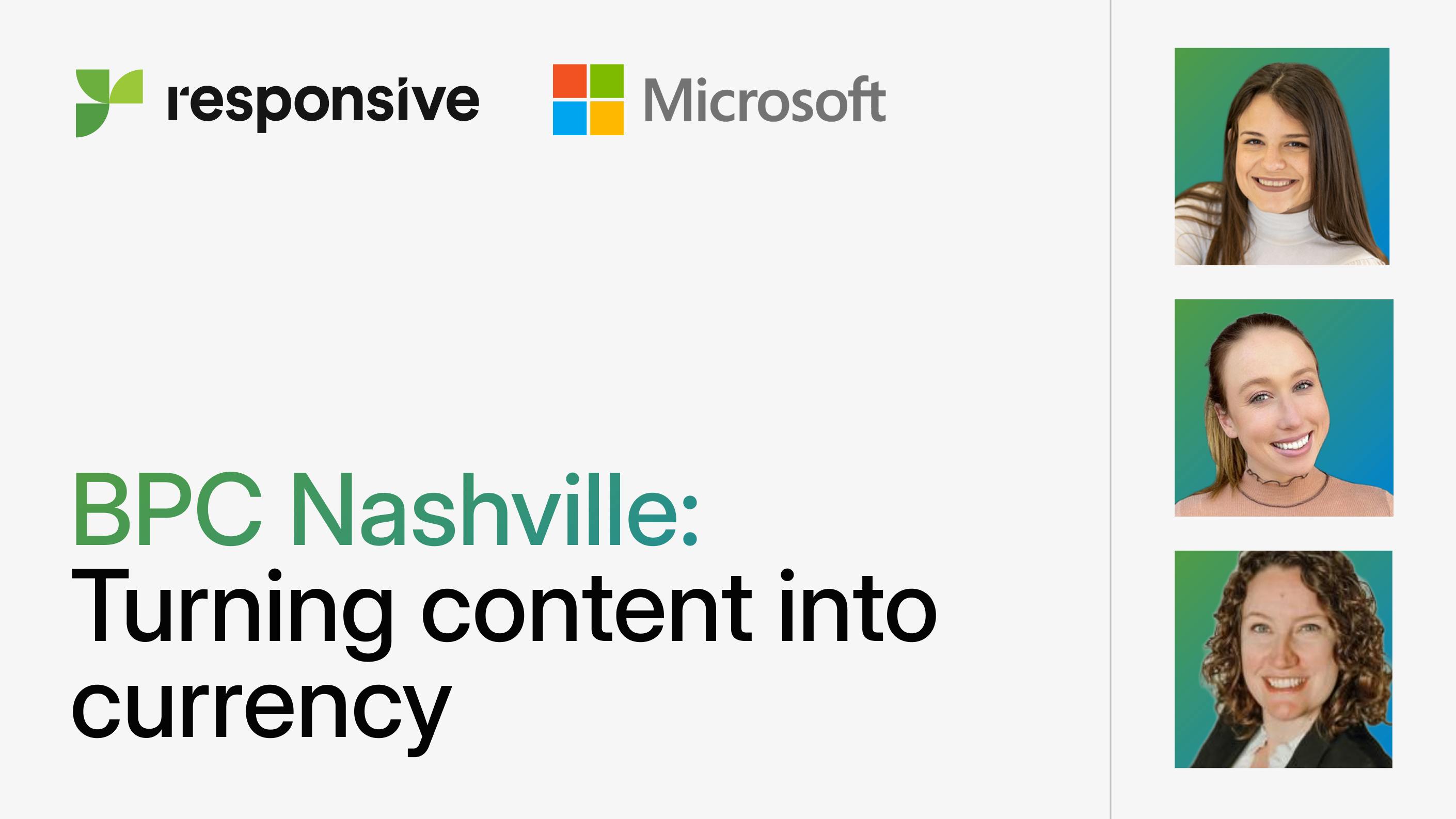The proposal content you store in your knowledge base isn’t just information — it’s infrastructure. Done right, it enables field self-service so teams can respond more quickly, accurately, and consistently. Done poorly, it slows everyone down and puts your brand, revenue, and reputation at risk.
At APMP’s BPC Nashville conference this year, Marcea Say and Helene Johnson from the Responsive Academy team were joined by Amanda Heather, Director of Strategy and Operations for Microsoft’s Proposal Center of Excellence (PCoE), to share best practices. Whether or not you joined us live, we’ve distilled the most actionable ideas here to help you scale faster, smarter content access across your organization.
Watch on-demand: Knowledge management for the AI era
Why knowledge management is essential in the AI era
AI won’t fix problems with your content. In fact, it amplifies them.
If your content library is cluttered, outdated, or disorganized, AI will struggle to deliver trustworthy results. A well-curated knowledge base turns AI into a true partner by empowering self-service across the field, improving proposal quality, and reducing the burden on SMEs and bid/proposal teams.
Five steps to an AI-ready content library
Here’s the approach we recommend, based on what’s worked for industry leaders.
1. Start with a usage audit
Begin by understanding what’s in your library — and what’s actually being used. Look at:
- Content usage reports
- What teams are searching for
- Alignment with current messaging, product offerings, and positioning
Don’t aim for perfection here. Focus on spotting patterns and identifying high-value gaps.
2. Declutter with purpose
Not all content is worth keeping. The more content you have in your knowledge base, the greater risk you run of AI pulling from duplicate or outdated sources.
Complete some internal strategizing at the outset. Ask questions like:
- Have there been any major changes in the last year that should be factored in?
- Are we willing to let go of content en masse?
- Is there content that’s obsolete?
- Are there specific projects we can get rid of?
Set clear benchmarks to identify ROT (redundant, outdated, trivial) content. If you’re not ready to delete, consider archiving in a separate space in your platform for future review.
3. Structure for searchability
Even the best content is useless if no one can find it. Create an intuitive structure that reflects how users search — not how your team thinks. Use:
- Tags and hierarchical tags
- Collections by use case, product, or audience
- Metadata and custom fields for filtering and reporting
Consistency is critical. A scattered taxonomy leads to scattered results.
4. Build governance into the process
Assign ownership. Define roles. Make moderation a habit, not a one-off.
Every content item should have:
- A named owner
- A scheduled review cycle
- Clear publishing and approval workflows
This step is what keeps your library useful over time and not just right now.
5. Invest in enablement
Technology alone doesn’t change behavior. Teams need training, context, and reinforcement to adopt a self-service model.
Prioritize:
- Training materials and walkthroughs
- Developing a moderation checklist
- Reporting that shows impact (like time saved or usage increases) to get buy-in from SMEs and leadership
When contributors understand the “why,” they’re far more likely to engage.
What knowledge democratization looks like in practice
Microsoft, a multi-year Responsive partner, applied these best practices at scale, transforming their knowledge base into a trusted, self-service resource used by more than 20,000 employees. Their team saved over $17M and 93,000 hours by streamlining access to vetted, AI-read content.
Learn more about how Microsoft did it here.
Getting started
You don’t need to overhaul everything at once. Pick one high-impact area – like your most common proposal type or a specific product line – and start there. Use analytics to guide your cleanup, and bring in field teams early to shape the structure.
AI can’t deliver value without the right foundation. A strategic, well-maintained knowledge base is the foundation. And the sooner you invest in it, the sooner your organization benefits.
